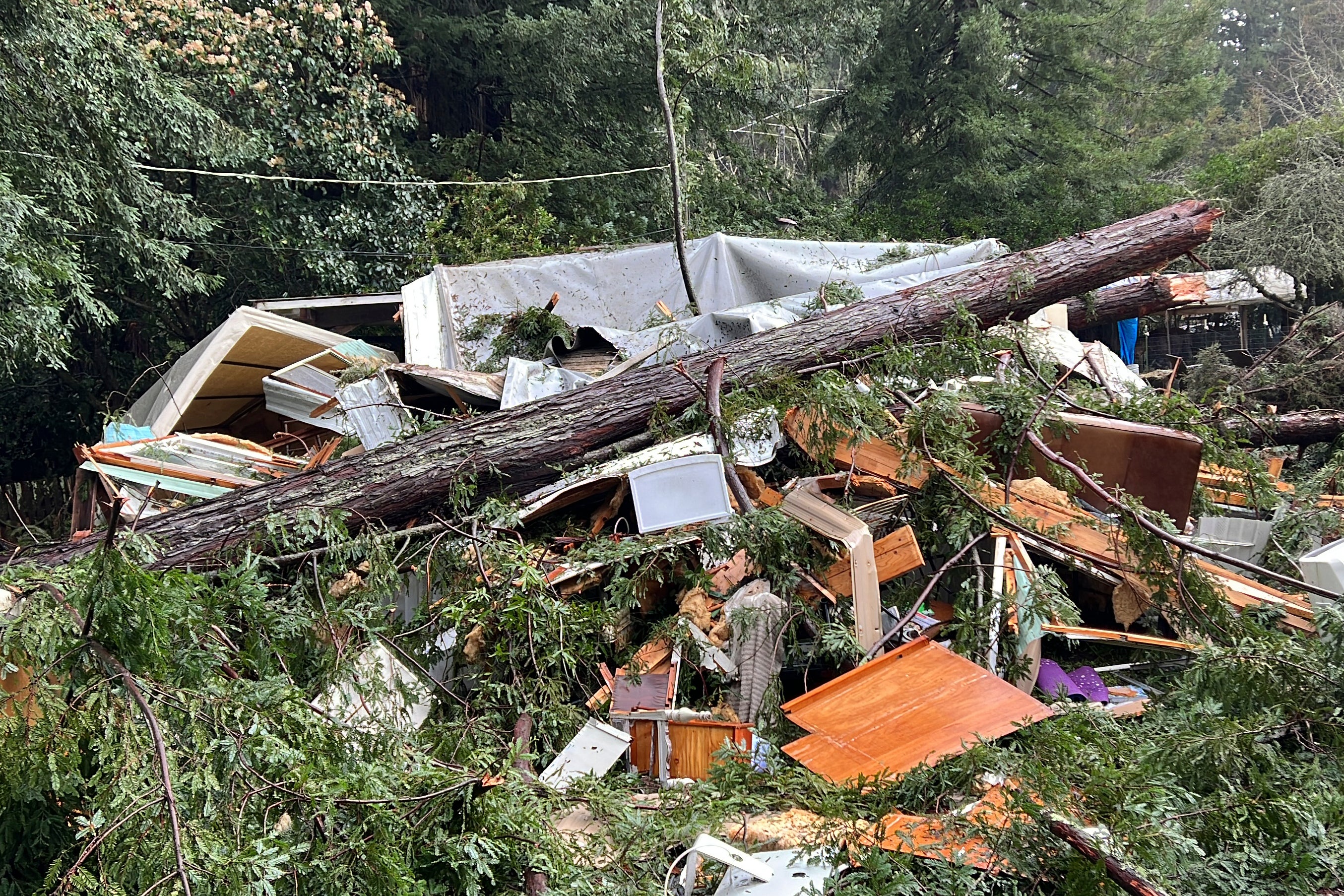California Hit by Extreme Storms and Flooding Once Again
The atmospheric rivers hitting California and its implications
California is currently experiencing a series of intense storms that are causing significant damage and disruption throughout the state. From overflowing rivers to mudslides, these storms have brought chaos and destruction to many areas of California, including major cities such as Los Angeles, San Francisco, and Sacramento. In this article, we will explore the causes and impacts of these storms, as well as the measures being taken to mitigate their effects.
The primary cause of these storms is a phenomenon known as the Pineapple Express, a weather pattern that occurs when a stream of moist air from the tropical Pacific Ocean flows toward California. This stream of air contains a significant amount of moisture, which can result in heavy rainfall and flooding when it collides with the colder air over the state. The Pineapple Express is a common occurrence in California during the winter months, but this year’s storms have been particularly intense, causing widespread damage and disruption.

One of the most significant impacts of these storms has been flooding, with many rivers and creeks overflowing their banks and inundating nearby homes and businesses. In some cases, entire communities have been cut off by floodwaters, with roads and bridges washed out or otherwise impassable. This has made it difficult for emergency responders to reach those in need, exacerbating the already dangerous situation.
Another major impact of these storms has been mudslides, which occur when heavy rainfall saturates the soil and destabilizes hillsides and other sloped areas. This can cause large volumes of mud and debris to slide downhill, damaging or destroying anything in their path. In some cases, homes and other structures have been buried under mudslides, resulting in significant property damage and posing a serious threat to the safety of those in affected areas.
The storms have also caused significant damage to California’s infrastructure, with many roads and highways closed due to flooding or mudslides.
Despite the significant challenges posed by these storms, California officials are taking steps to mitigate their effects and protect those in affected areas. One such measure is the deployment of emergency responders and resources to the hardest-hit areas, including search and rescue teams, sandbags, and other equipment to help contain floodwaters and mudslides. Additionally, officials are urging residents to stay informed about the storms and to take necessary precautions to protect themselves and their property, such as sandbagging and evacuating if necessary.
Another important response to these storms is the ongoing effort to improve California’s infrastructure to better withstand extreme weather events. This includes everything from reinforcing bridges and roads to upgrading drainage systems and other critical infrastructure. By investing in these types of improvements, California can better prepare for future storms and minimize the damage and disruption they cause.
 The storms in California have not only caused significant damage and disruption, but they have also highlighted the importance of climate change and its impact on extreme weather events. The Pineapple Express is not a new phenomenon, but climate change has exacerbated its effects, making it more intense and frequent. As global temperatures continue to rise, extreme weather events such as these storms will become more common, posing a serious threat to the safety and well-being of people living in affected areas.
The storms in California have not only caused significant damage and disruption, but they have also highlighted the importance of climate change and its impact on extreme weather events. The Pineapple Express is not a new phenomenon, but climate change has exacerbated its effects, making it more intense and frequent. As global temperatures continue to rise, extreme weather events such as these storms will become more common, posing a serious threat to the safety and well-being of people living in affected areas.
In addition to the immediate impacts of these storms, there are also long-term consequences that must be considered. For example, the flooding caused by these storms can lead to water contamination, putting the health of residents at risk. Additionally, the mudslides can damage ecosystems and destroy habitats, impacting wildlife and other natural resources.
The storms have also highlighted the need for improved communication and coordination between government agencies and residents in affected areas. In some cases, residents were not adequately warned or prepared for the storms, which resulted in preventable damage and loss of life. By improving communication and coordination, officials can ensure that residents are well-informed and prepared for future storms, minimizing the impact on their communities.
Another important aspect of the response to these storms is the need for compassion and support for those affected. Many residents have lost their homes or businesses and are struggling to cope with the aftermath of the storms. It is important for communities and government agencies to come together to provide support and assistance to those in need, whether through donations, volunteering, or other means.
The storms in California also highlight the importance of individual responsibility in mitigating the impact of extreme weather events. Residents can take simple steps such as clearing gutters and drains to prevent flooding, reinforcing structures to withstand high winds and heavy rain, and following evacuation orders when necessary. By taking these measures, residents can help protect themselves, their families, and their communities from the worst effects of these storms.
Looking ahead, there are several steps that California can take to better prepare for and mitigate the impact of future storms. One important step is to invest in infrastructure that is designed to withstand extreme weather events, such as improved drainage systems, reinforced bridges and roads, and more resilient buildings. Another important step is to improve emergency response capabilities, including the deployment of more advanced technology such as drones and other unmanned aerial vehicles to help assess damage and aid in search and rescue operations.
Finally, it is crucial that California takes steps to address the root cause of these storms: climate change. By reducing greenhouse gas emissions and investing in renewable energy sources, California can help mitigate the impact of climate change on extreme weather events, protecting both its residents and its economy. This will require bold action and collaboration between government agencies, businesses, and residents, but it is essential for the long-term health and well-being of California and the planet as a whole.
The current storms in California have caused significant damage and disruption, but they have also highlighted the importance of preparedness, resilience, and collaboration in the face of extreme weather events. By investing in infrastructure and emergency response measures, improving communication and coordination, and addressing the root cause of these storms, California can better protect its residents and its economy from the worst effects of climate change. With continued effort and determination, California can weather even the most intense storms and emerge stronger and more resilient than ever before.
















